BUYING A HELICOPTER
What you must know about shipping a helicopter
Using a professional service that has experience in purchasing, packing, shipping, and importing a helicopter can make all the difference.

By: Jen BoyerPosted on: February 13, 2024
Often serious helicopter buyers find their ideal aircraft across the continent, or even on the other side of the world. Buyers then need to identify the best way to ship the helicopter home.
“European-operated helicopters, for instance, can sell at attractive prices to buyers outside of Europe and may even have the added benefit of higher maintenance standards than other parts of the world,” said Xanthe Garahy, marketing manager at Leading Edge Aerospace’s HeliPackers subsidiary. “Purchasing a helicopter outside of your own country could add stress to buyers who don’t have a lot of experience in purchasing, packing, shipping, and importing a helicopter. That’s where using a professional service can make all the difference.”
Based in Vernon, British Columbia, since 2017, Leading Edge Aerospace is a Transport Canada-approved helicopter maintenance provider that specializes in providing mobile field maintenance services including AOG support, skilled labor for short-term contracts, flight testing, pre-purchase inspections, and now helicopter packing and import services.
After witnessing several customers’ difficulties and stressful experiences in purchasing and importing helicopters into Canada and the U.S., Leading Edge Aerospace began researching the business case for a service dedicated to coordinating end-to-end helicopter shipping for the buyer. It would need to maintain the highest standards of care in properly packing and securing aircraft for shipping, deeply vet freight forwarders and shipping companies, be highly transparent, maintain constant communication with all parties, and serve as a single trusted point of contact for the buyer.
Three years ago, HeliPackers was launched to provide buyers with every link in the chain required for a successful import: pre-purchase inspections and flight tests; helicopter disassembly and packing; full logistical support from pick up to delivery; import and export processes; helicopter reassembly; and, final flight test for release into operation. Clients are able to select any one of these products as its own module, or the whole package depending on the availability of their own in-house engineers.
Before anything: pre-purchase inspection
Many professionals we’ve interviewed here on HeliTrader have emphasized the importance of a pre-purchase inspection. HeliPackers’ director of maintenance Beth Christianos echoed their sentiment.
“You absolutely must do a pre-purchase inspection, and with a third party representing your interests, not the seller or broker’s interests,” Christianos emphasized. “Most people would never buy a house without a home inspection, but the number of multi-million-dollar helicopters bought without a pre-purchase inspection is shocking.”
Not only will an engineer go over the aircraft in the inspection to find any discrepancies or required maintenance that can affect the price, but equally as critical is an audit of the technical records to assess the integrity and traceability of these records. Without full traceability back to 0.0 TSN, your helicopter will not be able to be imported into your country.
“We don’t want this happening to you and your helicopter, so we advise folks not to close on their purchase until they have sent a qualified helicopter engineer who is experienced on type to thoroughly evaluate the helicopter and its technical records — before it’s too late and you find out at the border that you just bought an expensive paperweight.”
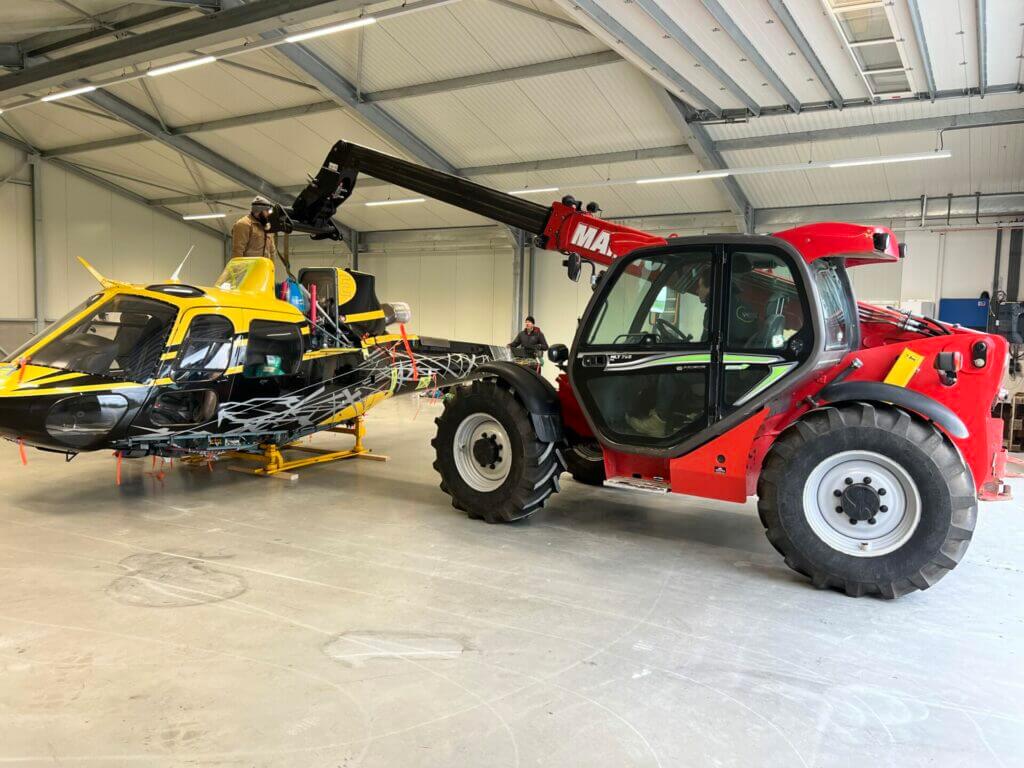
While HeliPackers provides a detailed pre-purchase inspection service, Christianos noted that there are many qualified engineers/mechanics with experience on aircraft type who can do a thorough job. That said, she warns buyers not to hire someone who is financially tied to a broker or the seller, as they may have a conflict of interest.
“You want to be sure who you hire is working for you,” she said. “Your broker can recommend people, of course, but do your homework and select someone who is working for your side of the table.”
Preparing your aircraft to ship
How an aircraft is shipped will determine how it is prepared and packed for shipping.
“The challenge that we see within the industry is people don’t realize there is much more involved than putting a helicopter into a shipping container and shipping it,” HeliPackers’ Garahy said. “It must be properly dismantled and secured by licensed engineers in order to protect all the fragile parts.
“A helicopter must also be packed specifically depending on how it will be shipped,” she continued. “Land, sea, and air all require different packing measures. Depending on the size of the helicopter, there are criteria in terms of what type of container is used, its size, and if the aircraft should be shrink wrapped or not. If the aircraft could be sitting in a port for some time, which can happen with the issues in the Panama and Suez canals these days, shrink wrapping to protect against salt air is a good idea. All of this affects how the helicopter arrives at its destination. Of course, you want it to arrive in the same state it left, and that is very dependent on how it’s prepared and shipped.”
Preparing and packing a helicopter is in fact a complicated process with many small nuances that can make all the difference. Examples of the many steps involved include, but are not limited to:
- Properly covering all openings, vents, and ports
- Defueling and marking proof of defueling
- Desiccant applied as a protective coating
- Draining gear boxes, filling them with preservative, and marking them
- Stowing all flight controls securely
- Removing antennas, disconnecting battery, turning off ELT
- Swapping landing gear with shock absorbent shipping gear
- Securing avionics and gimbals
- Packing, marking, photographing, and securing all removed aircraft parts
- Loading and securing all helicopter sections
- Producing and securing photos and manifests on the outside of the container for customs
- Protect windows and interior surfaces
- Ensuring correct ratchet straps are utilized
- Incorporating redundancies into securing parts and aircraft sections
- Shrink-wrap the aircraft and parts if needed
- Install Drop-N-Tell shock indicators on the container
- Photograph every step of the process for insurance, transparency, and reassembly
- Following all helicopter manufacturer disassembly and shipping procedures
- Record all work in the maintenance logs
“A lot of people don’t realize how specialized all this work is, especially if they’re new to aviation,” Christianos noted. “That container you are packing will be subject to different forces during the journey. Riding on a truck, loading and unloading, crossing an ocean, all of that has the potential to cause damage to any part of the aircraft, including the finely machined gears and engine parts if it has not been packed and secured properly. If anything moves, rubs or, God forbid, breaks loose, it can be very, very expensive.”
For instance, Christianos shared a story where the incorrect type of ratchet strap was installed, and consequently failed on its sea journey. The result was the aircraft fuselage slid back and forth during the trip, hitting the other parts and jolting parts within the aircraft and engine — resulting in a total loss.
In another incident, the aircraft container was improperly marked. The Drop-N-Tell indicator wasn’t there along with markings that it was very sensitive cargo. While the aircraft survived the trip across the ocean, it was loaded onto a tractor trailer without air ride suspension, causing the aircraft to vibrate and bounce so much on the final journey that hundreds of thousands of dollars of damage were incurred.
Do your homework
In the end, the best thing a buyer can do to protect a helicopter investment that needs to make the journey is carefully research and invest in experienced engineers/mechanics who go the extra mile to prepare and pack the aircraft. From there, Christianos says it’s important to research freight forwarders and shipping companies. There are some out there that say they can ship aircraft, but may not be as versed in the technical specialties that a helicopter shipment requires.

“We do a lot of vetting to ensure companies we partner with are transparent, experienced, and professional,” said Christianos. “If you’re not going with a company that manages all these logistics, be sure you’re taking the time to carefully vet everyone – pre-inspection engineers, packers, freight forwarders, shippers, trucking companies, and reassembly engineers. Ensure they are experienced with and respect the process of high-value cargo, and that they’ll communicate clearly and transparently the whole time.”
A good freight forwarder will provide seamless end-to-end transportation and coordinate cross-border transit, for example. If it can’t do this without involving multiple other companies contacting you for information, be wary, Christianos warned.
“While the tasks themselves are highly specialized, the logistics is straightforward – you load the helicopter into a container, it goes to the port, it’s carried across the ocean, it arrives and clears customs, then it goes to your final destination. If a company you’re researching makes it confusing, keep researching.”
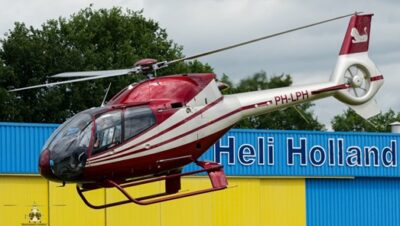
Airbus EC120B
Contact seller for price
Year: 2001

Airbus AS350B3
USD $ 1,599,000
Year: 2004
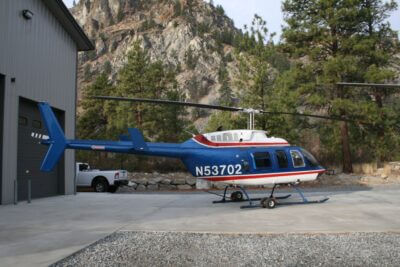
Bell 206L3
Make an offer
Year: 1992

Bell 206L4
Make an offer
Year: 1996
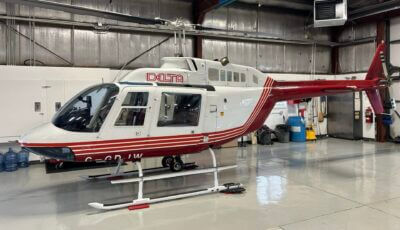
Bell 206B3
Contact seller for price
Year: 1979

Bell 206B3
Contact seller for price
Year: 1980

Airbus AS355F2
Contact seller for price
Year: 1992

Bell 206B3
Contact seller for price
Year: 1973
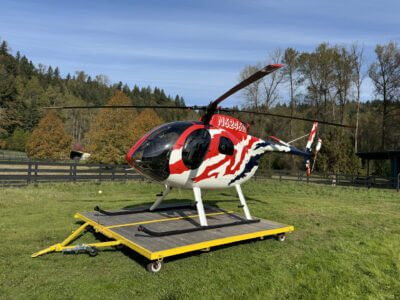
MD Helicopters 369A
Contact seller for price
Year: 1968
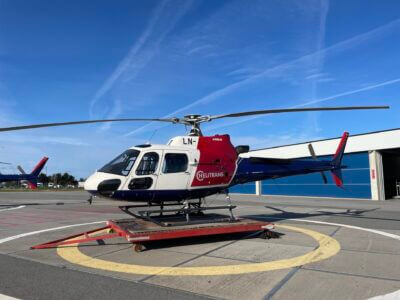
Airbus H125
EUR € 2,400,000
Year: 2020







